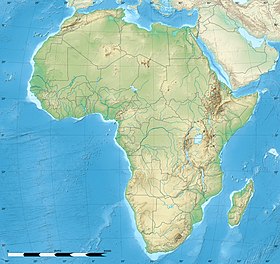Sahara (Arabic) is the name given to a desert region of Africa called Tiniri (or Ténéré) by natives who speak Berber language. It is the largest and the only true desert in the geographical sense because it has hyperarid regions (less than 50 mm annual rainfall but with extreme interannual irregularity), dry (less than 150 mm annual rainfall and vegetation concentrated in wadis), semi-arid and dry sub-humid. The diagonal dry which it belongs includes Sahara, Arabia, the Syrian desert (Syria, Jordan and Iraq), Dasht-e Kavir (Iran), Dasht-e Lut (Iran), Thar (India) and continues with the temperate latitude deserts of Central Asia (the Karakum, the Kyzyl Kum) and Chinese (the Taklamakan and Gobi).
This dryness can be explained by the loss of two major sources of precipitation: the polar front and the equatorial currents of Western Canada.2 and it leads to droughts particularly important in intensity and duration.

No hay comentarios:
Publicar un comentario